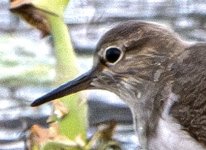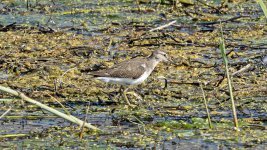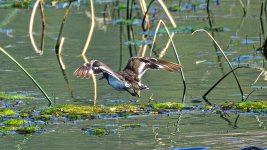Hi Murat, if the subspecies isn't illustrated or described in detail, how can it be considered?
Photos of macularius from e.g. western Canada presumably relate to
rava (
if it is a valid taxon - doesn't appear to be) but look indistinguishable from nominate.
I'd suggest that as there are no features for Spotted Sandpiper (except the odd tail, which could be explained via retarded moult or regrowth following loss) and multiple contributors have given sound explanation on why it isn't a Spotted Sandpiper... it isn't a Spotted Sandpiper!
Of course, if you disagree, you can submit to your regional or national committee, though I'd be surprised if the outcome was any different.
Hope this helps put your mind at ease.








